Excerpts from Jim Conrad's
Naturalist Newsletter
entry dated May 18, 2022, notes from a camping trip among hills about 7kms ENE of Tequisquiapan, Querétaro state, MÉXICO
elevation about 2020m (6600 ft), near N20.57°, W99.85°
GREAT DESERT SPOON
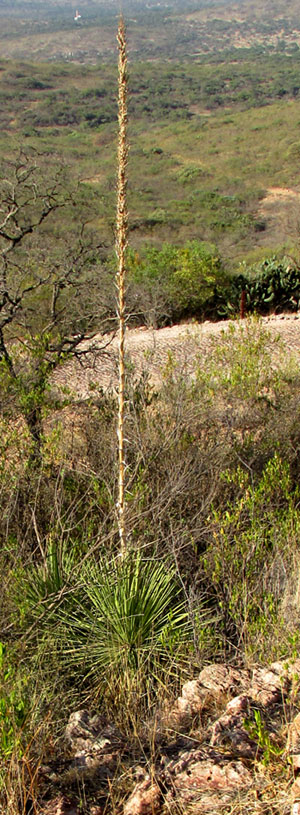
On a rocky, grassy slope of a hill composed mostly of volcanic rhyolite, near La Higuera, the plant at the right caught my eye. It was similar but different from the Texas Sotol seen mixing with Ashe Junipers in semiarid southwestern Texas.
Sotols are species of the genus Dasylirion, in the Asparagus Family, the Asparagaceae. About 17 sotol species are recognized, and as a plant group they occur naturally only in Mexico and parts of the southwestern US. In our semiarid upland region of central Mexico known as the Bajío, six species occur, so which was this?
This sotol was all alone, on a slope beyond a rocky ledge I couldn't get around. However, with my little camera's modest telephoto lens the plant's manner of distributing its flowers on the inflorescence's spreading branches could be seen. Sotol plants come in male or female editions, and this one with its capsular, three-winged fruits dispersed on spreading inflorescence branches was obviously a female:
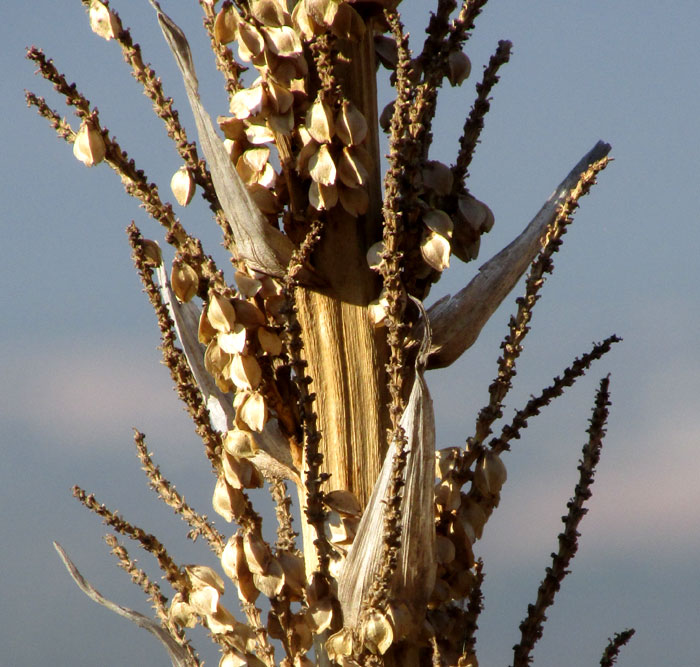
Details of flowers and fruits are important for identification, so a part of the above picture was "blown up" to show individual fruits better:

On around the hill another sotol was encountered, this one looking like the same species but not producing flowers. However, this one could be looked at closely. A curious feature was that its leaf tips, instead of ending in sharp points as you might expect, disintegrated into disheveled looking clusters of curling fibers.
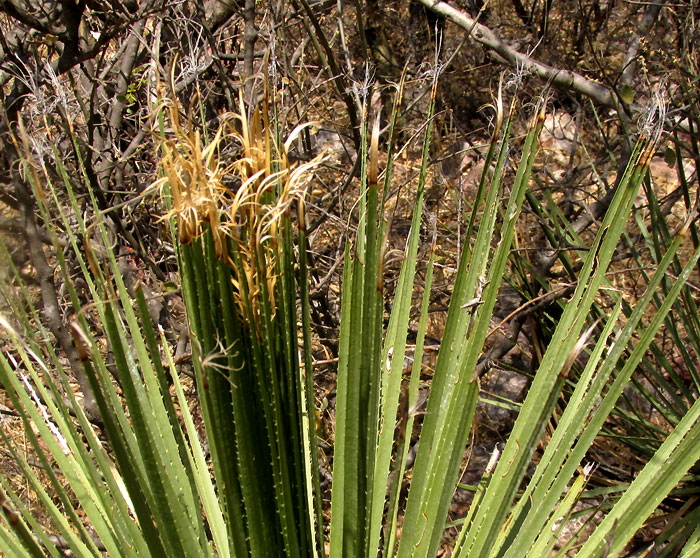
Most sotol species bear spines along their margins, and the spines themselves display important field marks:
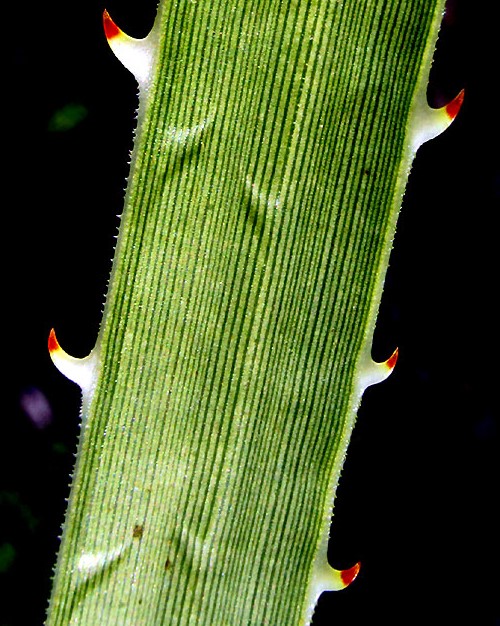
The spines are somewhat regularly spaced along the blades' margins, they're broad based and mostly but not always curve toward to blade's tip. Also they're pale yellow to white with a rusty-red tip, and the blade margin between teeth is armored with nearly microscopic sharp teeth. Another good field mark is better shown in the picture below providing a different view of this second plant:
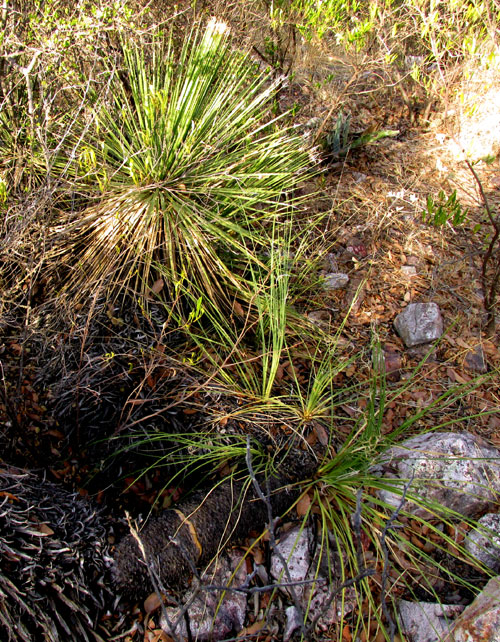
The tree has a trunk, which has fallen, and from which new sotols are sprouting. The trunk seems to have broken, with the top part taking a new direction, and sprouting the large tuft of leaves. Some sotol species produce much shorter, proportionally thicker trunks.
The Flora del Bajío indicates that this is DASYLIRION ACROTRICHUM, for which the English speaking world seems to have settled on calling Great Desert Spoon.
Up north, Great Desert Spoon is sold commercially in the garden trade. Sotols in general are described as slow-growing evergreen plants used in gardens and "rockeries" of succulents and cacti, plus they're suitable for large pots. Our species is described at the Gardenia.net website as ".. a very ornamental evergreen succulent boasting a perfectly rounded rosette packed with up to 100-300 long, slender, ribbonlike, lime green leaves with feathery, tufted ends."
I hadn't noticed tufted ends on the leaves of the first one with its fruiting spear. However, the Flora del Bajío says that on older plants the fibers may wear off.
The Flora del Bajío also recommends that the species be protected because local people cut the leaves to weave into long-lasting "flowers" for religious ceremonies. From what I can see, habitat destruction is a big problem, too, especially where cattle are encouraged to graze. As grass invades such area, the locals tend to set fires each dry season to "encourage new growth" of grass when the rains return. These fires damage and often kill native plants like sotols.
In former times the various sotol species were major food sources for indigenous Americans in arid scrub environments, for their bulbs can be roasted in rock-lined pits and pounded into meal for cakes. Even today sometimes a potent alcoholic drink, also known as sotol, is distilled from the various sotols' baked and fermented bulbs. People used to weave sotol leaves into fairly durable baskets.